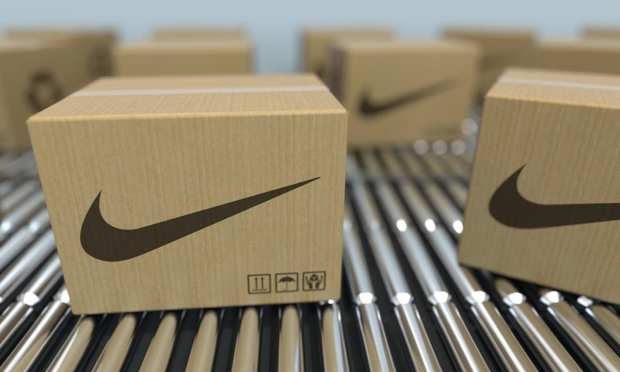Nike’s Supply Problem Isn’t Causing Demand Problems (Yet)

Whether it’s the famed Nike swoosh, legendary Air Jordans or iconic Converse All-Stars, demand for — and recognition of — the world’s largest athletic shoemaker’s top three brands has never been stronger. However, meeting that demand has never been tougher.
This, as a mix of cascading supply chain problems has caused a three-week lag in the flow of new sneakers from Nike’s factories in Asia, leading to a double-digit decline in inventory as well as a rare revenue miss in the company’s latest quarterly results.
“Starting in late December, container shortages and West Coast port congestion began to increase the transit times of inventory supply by more than three weeks,” Nike CFO Matthew Friend told investors on Thursday evening (March 18). “The result was a lack of available supply, delayed shipments to wholesale partners and lower-than-expected quarterly revenue growth.” He noted that Nike expected to recapture this delayed revenue and sales during March, April and May.
Delays Drive Digital
With no signs of slackening in the trendy “Sneakerhead” movement (which Nike dominates) or any retreat in the athleisure style trend, the current supply chain pinch — along with 35 percent of Nike’s retail locations still being closed due to pandemic health restrictions — has only accelerated its digital and direct-to-consumer sales, an outcome that is exactly in line with the Beaverton, Oregon company’s long-term strategy.
“Our operating priorities remain unchanged, and we are focused on what we can control: optimize marketplace supply and demand with speed and agility, accelerate the pace of direct connections with consumers and exert our financial strength to move faster toward our long-term strategic vision of the consumer direct acceleration,” Friend said.
For the three months ending Feb. 28, the company’s fiscal third quarter, Nike said its digital business grew 60 percent, led by triple-digit growth of its app, which Friend said continued to grow at that pace in March. Not surprisingly, the company said it will continue to prioritize inventory for its strategic partners and for Nike Direct.
“Our owned digital business is thriving, with growth of 54 percent on a currency-neutral basis during the quarter,” Nike CEO John Donahoe said on the call. “This growth was led by North America, which had its first-ever quarter with $1 billion in digital revenue,” he added, noting that its women’s business also saw nearly 90 percent growth in digital sales.
Digital Drives Profits
Donahoe also noted that the “strategic shift to increasingly direct and personalized connections with consumers” had unlocked a financial opportunity for Nike.
“This quarter, Nike Direct gross margins contributed to our overall gross margin expansion of 130 basis points, being fueled by a higher mix of digital, which carries a higher gross margin rate, as well as optimization of new pricing capabilities using advanced analytics in North America,” he said, reiterating the well-established cost savings and efficiencies derived from selling online.
So with its app whirring, its website clicking and its membership and loyalty rising, Nike has been able to learn more about its end customers than ever before. For example, Friend said Nike leveraged data to identify consumer cohorts and then make “personalized product recommendations” for active and inactive members to increase repeat purchasing. Nike was also able to “amplify our speed in analyzing consumer data,” Friend added, which fostered better product marketing and service recommendations, increased member buying frequency, basket size and retention rates.
“It is clear that our shift to a more direct, member-centric business is beginning to drive strategic and financial value for Nike, and we are confident we are making the right investments in the areas that matter most,” he concluded.
‘Adjust and Win’
The fact that Nike’s Q3 total revenue rose 3 percent as its North American sales fell 11 percent is a testament to its global footprint, especially in China, while its 70 percent increase in net income is a reflection of its increasingly digital profile.
The company’s “low-to-mid-teens” revenue growth guidance for the full year ending May 31 also fell short of analysts’ existing estimates, which put pressure on Nike shares, which have risen 110 percent in 12 months. That said, despite all the supply problems and pandemic complications, one thing has not changed: Nike’s brand momentum.
“We remain consumers’ No. 1 favorite brand in all 12 of our key cities, in both men’s and women’s businesses, and the relationships we have with consumers cannot easily be replicated,” Donahoe said.
That said, the company has had no choice but to adapt to what it called a dynamic external environment. “No matter what happens — COVID spikes forcing store closures, port congestion on the West Coast and more — this team responds with solutions. We adjust and we win,” Donahoe said.
